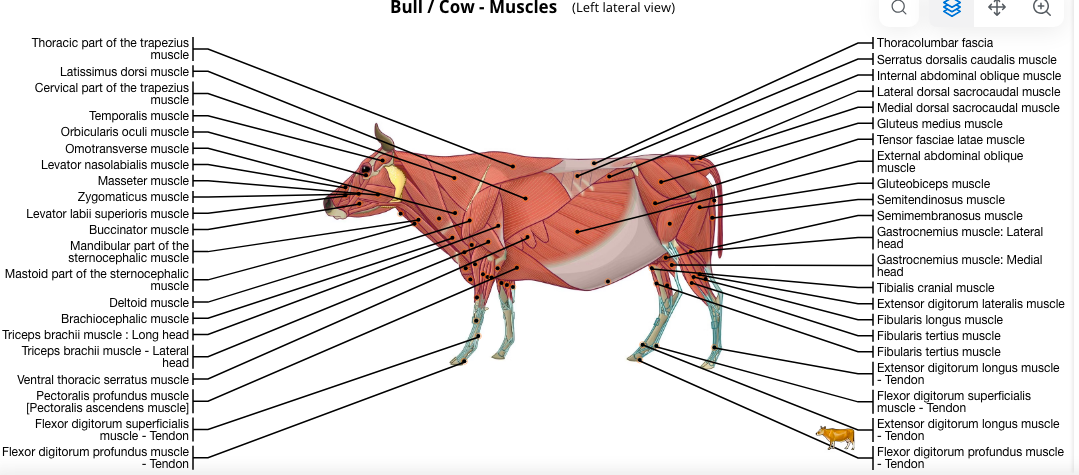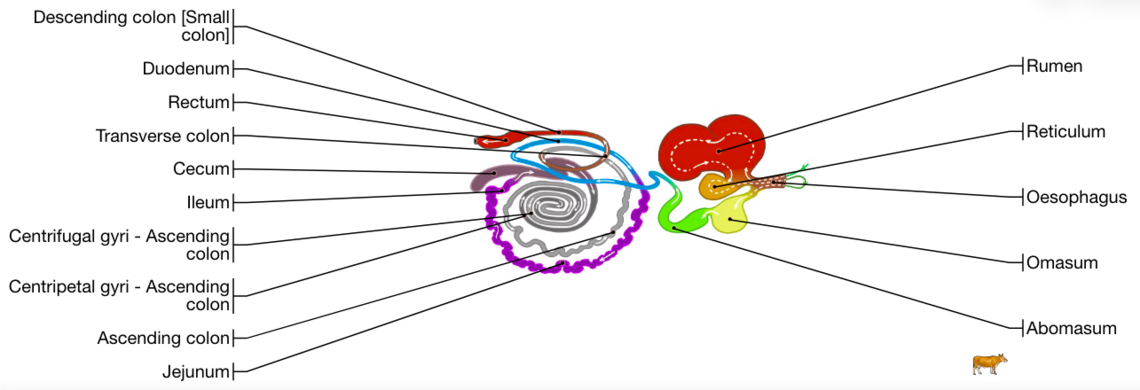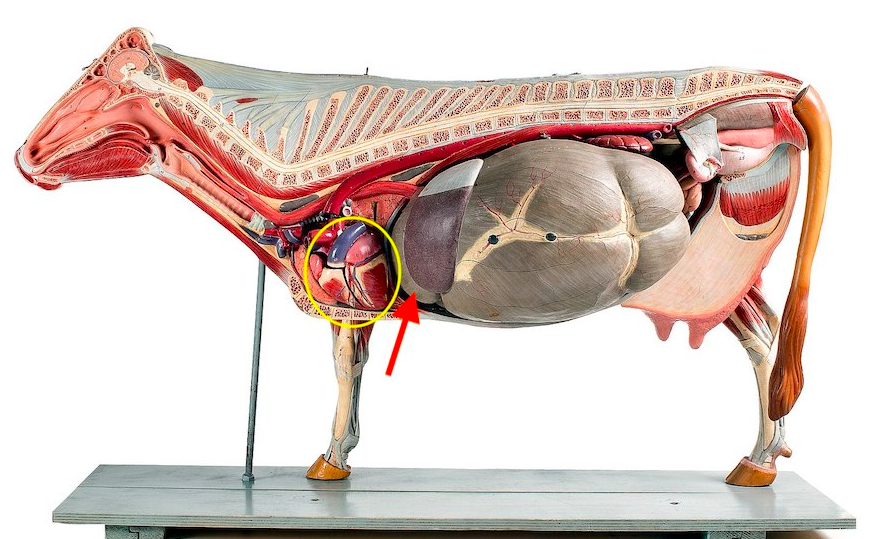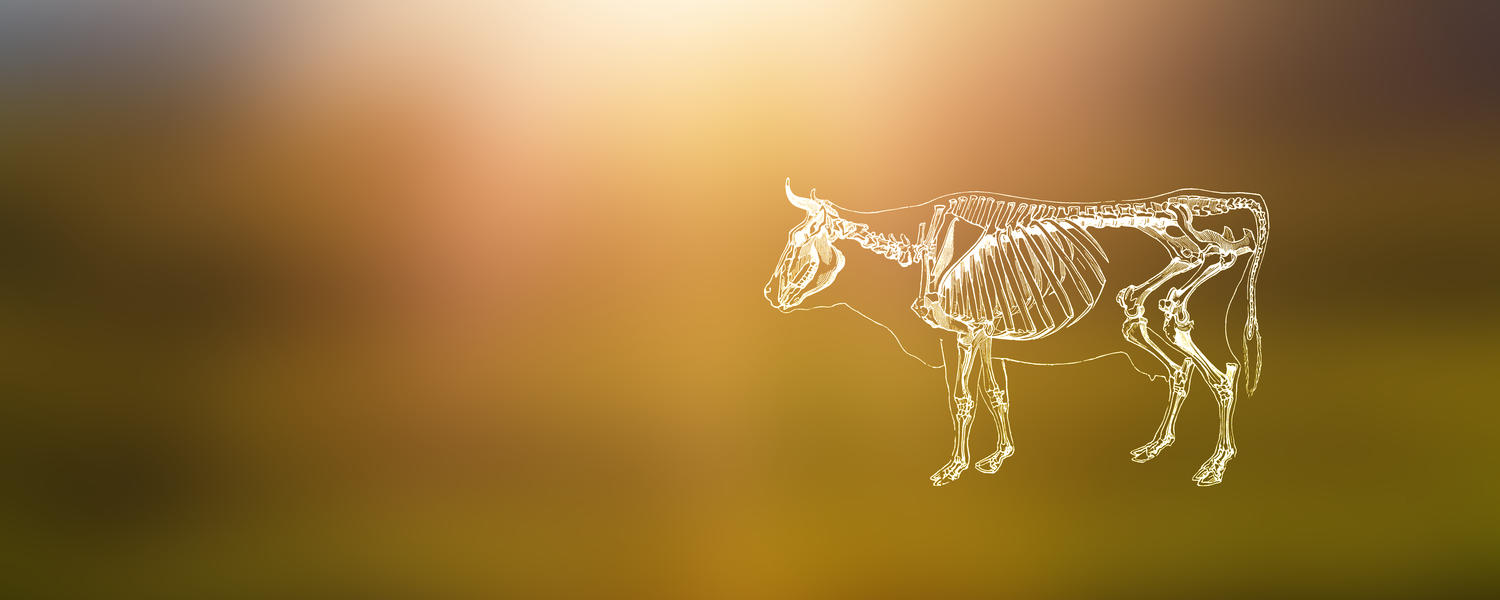
Anatomy: Production Animal
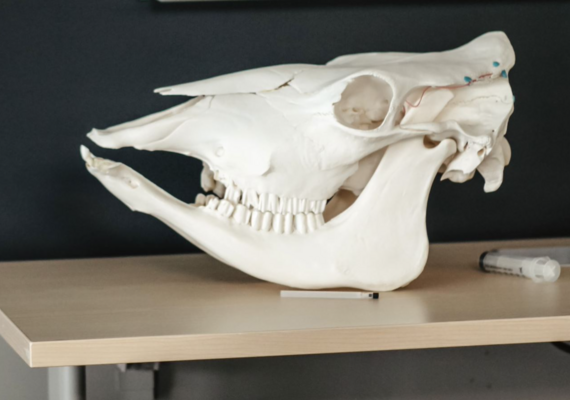
Welcome to production animal anatomy!
We will be going through some of the major body systems, such as the respiratory system, the digestive system, the musculoskeletal system, the renal system, and the reproductive system of cows, alpacas, and pigs.
The bovine skeleton is very similar to the skeletons of other mammals, with slight variations. Bovine have 7 cervical vertebrae, 13 thoracic vertebrae (and ribs), 6 lumbar vertebrae, 5 sacral vertebrae, and 18-20 coccygeal vertebrae. In the lower forelimb of bovids, the radius and ulna are separate, but the ulna is quite slim. In the lower hindlimb, the fibula has also reduced in size in comparison to the tibia.
Skeletal Systems
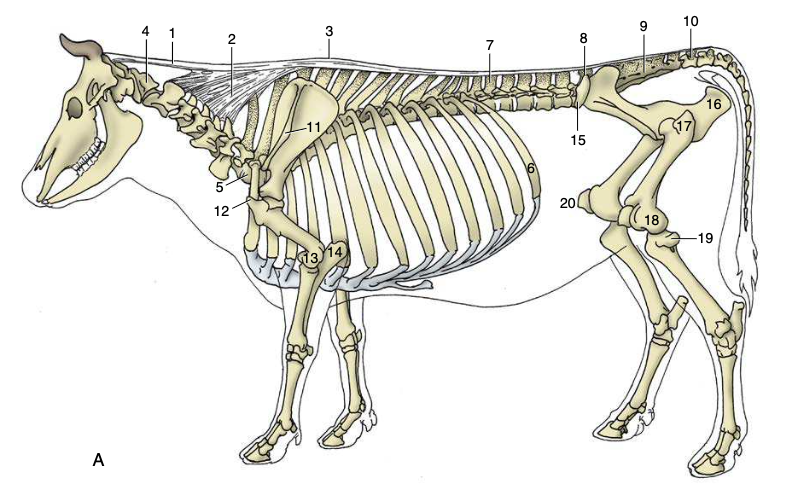
Some important anatomy of the Bovine: 1 and 2: Nuchal ligament, 11: spine of scapula, 12: greater tubercle, 13 and 14 (palpable features at elbow joint): 13: lateral epicondyle and 14: olecranon, 15: tuber coxae, 16: ischial tuber, 17: greater trochanter, 18, 19, and 20 (palpable features of stifle joint): 18: lateral condyle of femur, 19: lateral condyle of tibia and remnant of fibula, and 20: patella. A: Masseter, B: jugular vein, C: brisket, D: carpus, E: paralumbar fossa, F: flank fold, G: udder, H: hock joint, I: calcaneus (point of the hock), J: lateral saphenous vein.
Dyce, Sack, and Wensing 2017
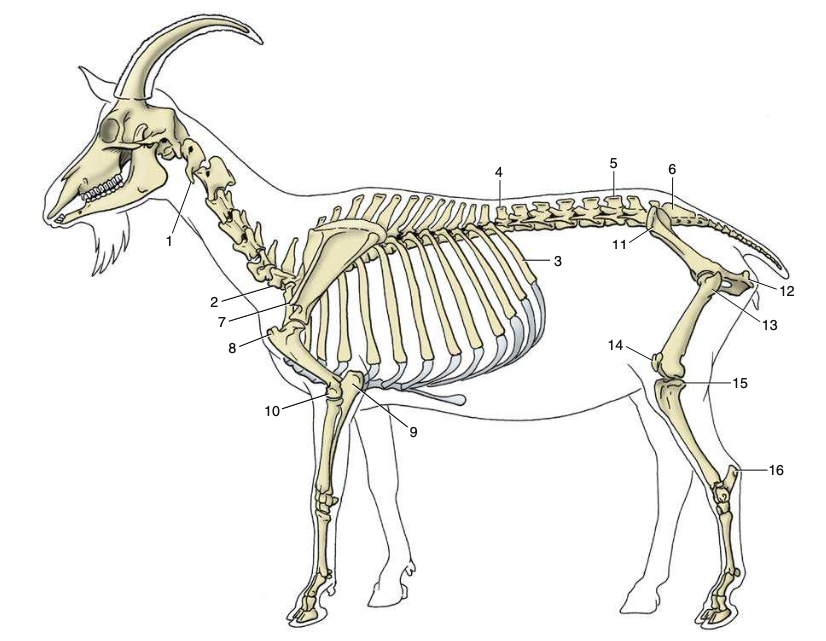
The skeleton of the goat: 1: Atlas, 2: last cervical vertebra (C7), 3: 13th rib, 4: first lumbar vertebra (L1), 5: last lumbar vertebra (L7), 6: sacrum, 7: acromion, 8: greater tubercle, 9: olecranon, 10: tuber coxae, 12: ischial tuber, 13: greater trochanter, 14: patella, 15: lateral condyle of tibia, 16: calcaneus.
Dyce, Sack, and Wensing 2017
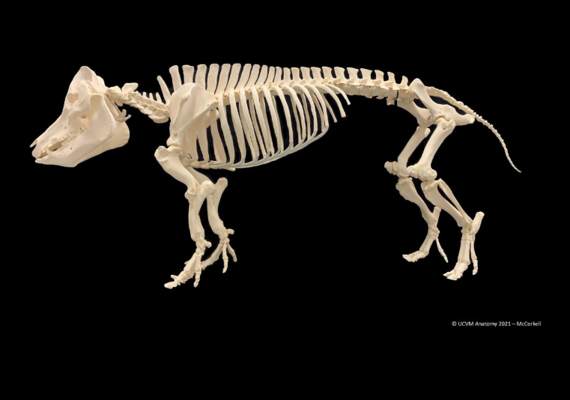
Porcine Skeleton
Here is what a pig skeleton looks like! Can you see any differences from the bovine and alpaca skeleton?
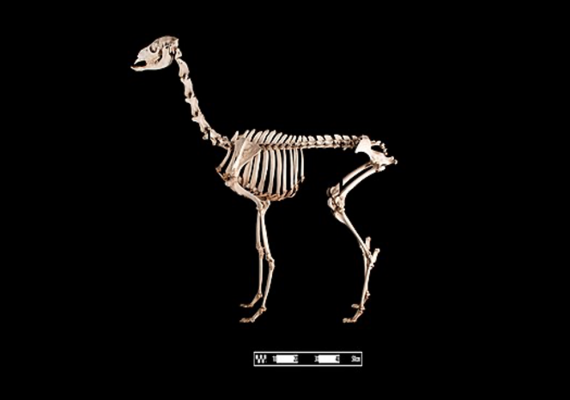
Alpaca Skeleton
Here is what an alpaca skeleton looks like! Can you see any differences from the bovine and pig skeleton?
Image Credit: Museum of Veterinary Anatomy FMVZ USP
Can you now see how the build of these animals are different but the bones remain similar? This is why once you learn the anatomy of one animal, it becomes easier to apply that knowledge to another!
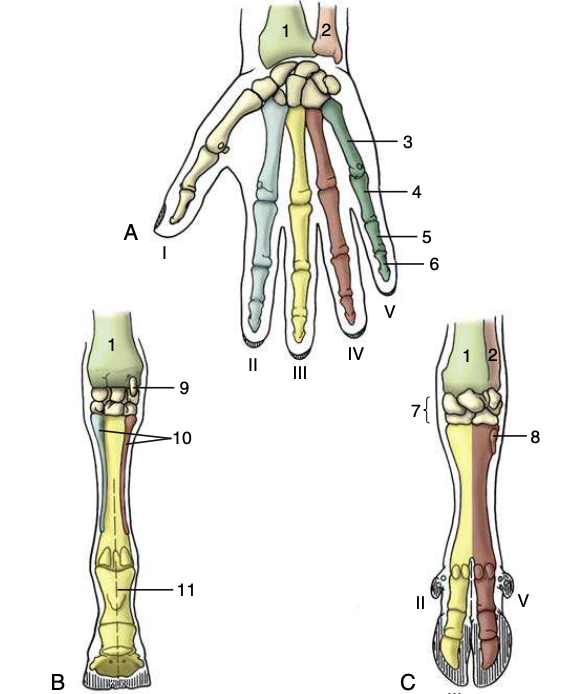
Dyce, Sack, and Wensing 2017
Use this diagram to quiz yourself. Can you name the bones in the human hand and the comparative bones in the B) EQUINE and C) BOVINE?
We have studied the equine distal limb and now you can compare to the anatomy of a ruminant. Note that the middle finger and the ring finger (metacarpals III and IV) make up the two claws of the ruminant foot.
Distal Limb
Although the anatomy of the bovine, alpaca, and porcine distal limb is different, there are still similarities between them! What are some differences between the images on the right?
Compare the images to your hand. You have 5 metacarpals and phalanges. You walk on the bottom of your feet so you are considered a plantigrade. Think back to the horse distal limb from the other day and compare the horses distal limb to these images. Horses only have 1 digit, the 3rd phalanx, and 3 metacarpals, numbers 2, 3, and 4. Horses are unguligrades because they walk on their hooves.
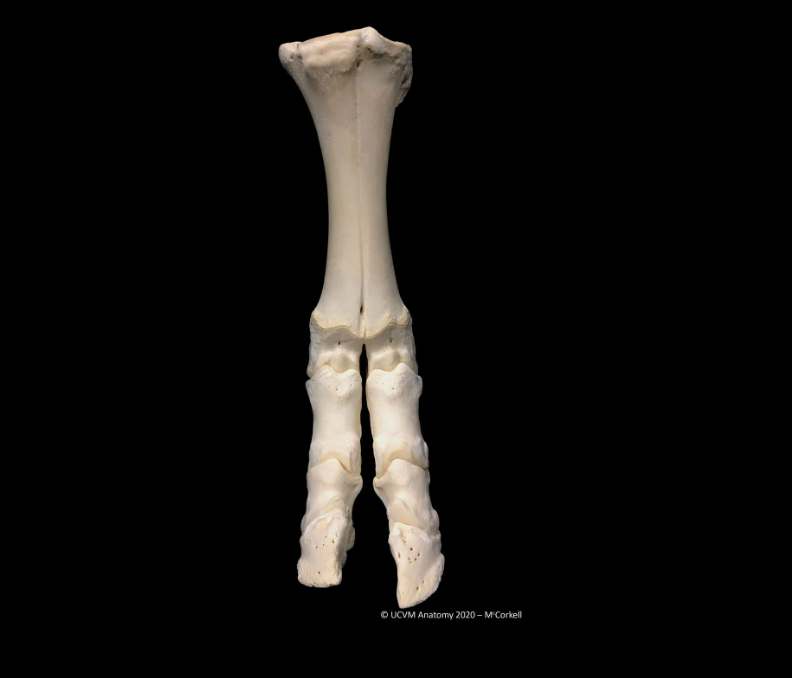
Bovine Foot
Bovines only have the 3rd and 4th metacarpals and associated phalanges/digits, so they are essentially walking on their 3rd and 4th fingers! Ruminants are unguligrades which means that they walk on their nails/hoofs.
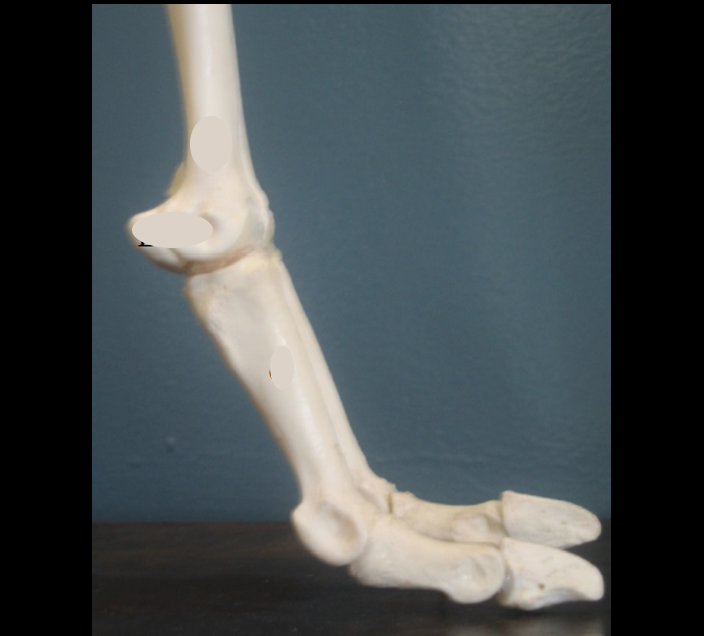
Alpaca Foot
Alpaca feet are similar but unique. They also only have their 3rd and 4th metacarpals and phalanges/digits. This means they are also walking on their 3rd and 4th fingers! However, unlike cattle and pigs they are considered plantigrade. This means that they do not walk on their toe nails but on their soft toe pads. Due to this, we need to trim alpaca nails when they become too long.
Image Credit: Amy L. Walters
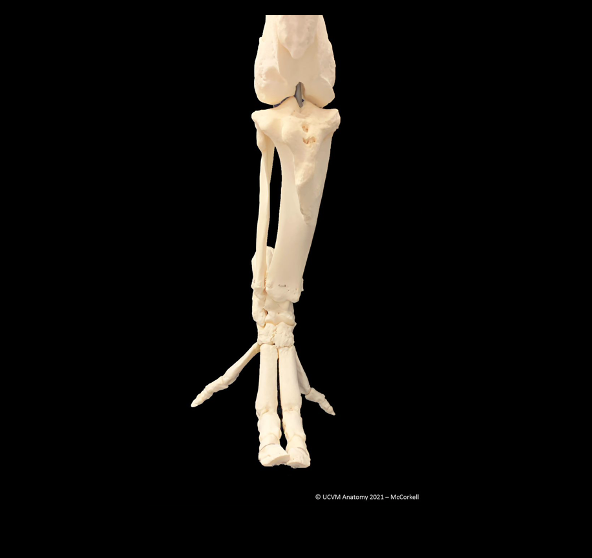
Pig Foot
Pigs have 4 metacarpals and phalanges/digits. However, pigs use their 3rd and 4th digit as their main hooves, and the two outer digits, the 2nd and 5th, are smaller and non-weight bearing. These extra digits do not have a particular purpose and are now a relic of the pig's evolution. Pigs also have hooves, so they too are considered unguligrades.
Muscle Systems
Here is a diagram showing the muscles labeled.
Which muscles do you think are the most commonly eaten and what are the "cuts" that this muscle makes?
Production Animal Organs
The Respiratory System
Bovine Respiratory System
Watch the video below to see the inflation of real cow lungs!
Gastrointestinal Systems
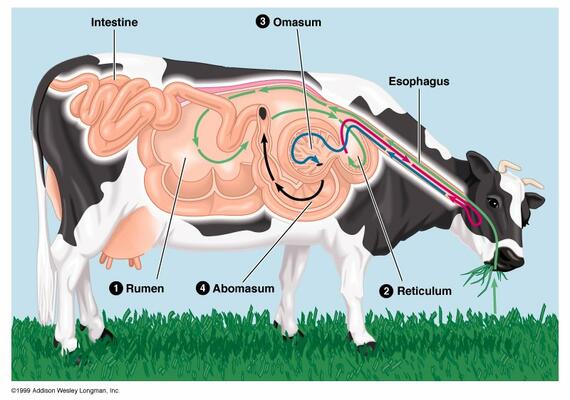
Bovine Digestion
Like horses, cattle are herbivores. Ruminants such as cattle, sheep, and goats have become specially adapted to help them digest plant substances, such as cellulose. They are foregut fermenters which means they have a very specialized stomach with 4 compartments that house bacteria to help them break down their food!
Here is an overview of the bovine digestive system:
Bovine Digestive Tract
The bovine digestive tract consists of the mouth, esophagus, a complex 4-compartment stomach, the small intestine, and large intestine. The stomach includes the rumen, the reticulum, the omasum, and the abomasum. Cattle are foregut fermenters, which means that the majority of the digestion of their food occurs within their 4-compartment stomach. Food travels from the esophagus into the rumen, from the rumen into the reticulum, from the reticulum into the omasum, and from the omasum into the abomasum.
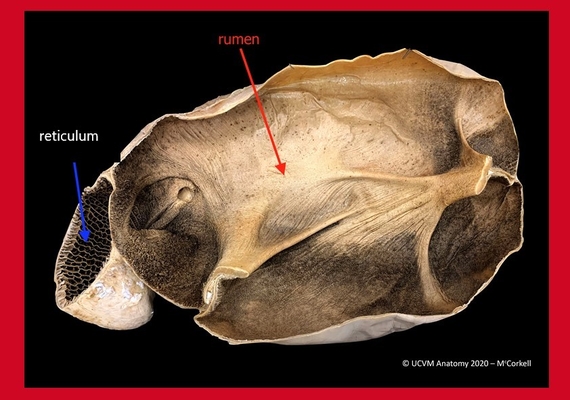
Bovine Rumen
The rumen is on the left side of the cow and makes up 80% of a cow’s stomach volume. It is a fermentation chamber that helps break down fibrous plant material. Fermentation is a slow digestive process carried out by bacteria. These bacteria convert indigestible fiber into useful nutrients for the cow. The floor of the rumen contains large, paddle-shaped papillae that increase the efficiency of food digestion by increasing surface area. The reticulum sits cranially to the opening to the esophagus and its tissues are arranged in a honeycomb-like structure. Together, the rumen and the reticulum are commonly called the ruminoreticulum. The reticulum is very close to the diaphragm and heart, and thus has implications when cows eat things that they are not supposed to!
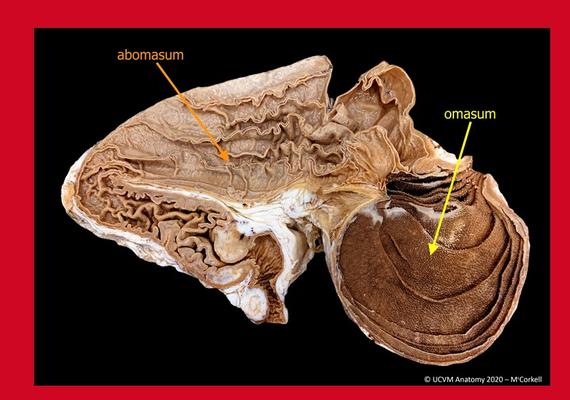
Omasum & Abomasum
The omasum is a ball-shaped structure that contains leaves of tissue that increase surface area for water reabsorption. The omasum makes up approximately 8% of the cow’s stomach volume.
The abomasum is the equivalent to the simple glandular stomach of dogs, cats, horses, and humans. It produces acid and proteins called enzymes that help breakdown feed and release any remaining nutrients.
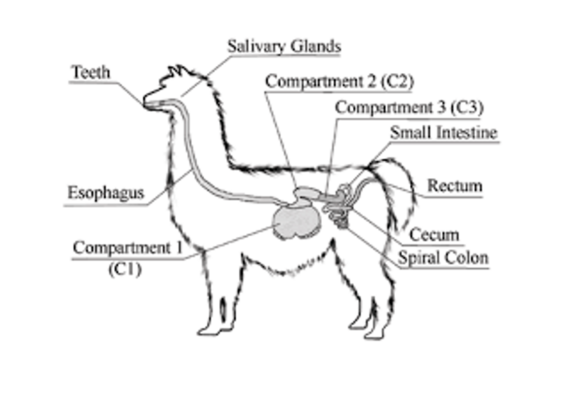
Alpaca Digestion
Alpacas are also herbivores and have developed a strategy to be able to utilize the plant material in their diet that is harder to digest. They are also foregut fermenters, and have a complex multi-chambered stomach that houses bacteria to help them digest their food!
Here is an overview of the alpaca digestive system:
Image Credit: https://encrypted-tbn0.gstatic.com/images?q=tbn:ANd9GcSYEbX_ECjnWKtBHPGpW2tWNCxDJFMMr270nQlvGJEgEjvrorC0ZtBNsDKNivLlVWRtMaA&usqp=CAU
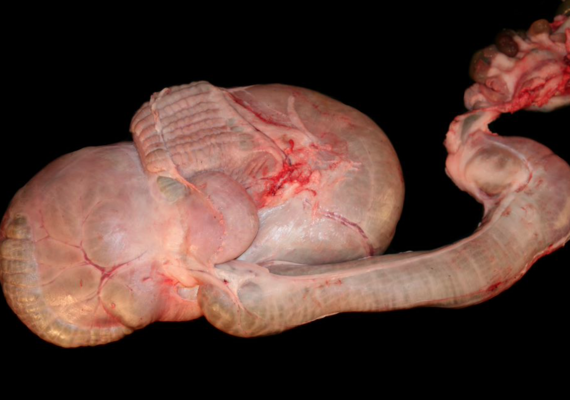
Alpaca Stomach
Alpacas have a 3 chambered stomach that houses specialized bacteria to help them digest plant material. The chambers of the stomach are appropriately named C1, C2, C3.
This image shows the alpacas unique stomach!
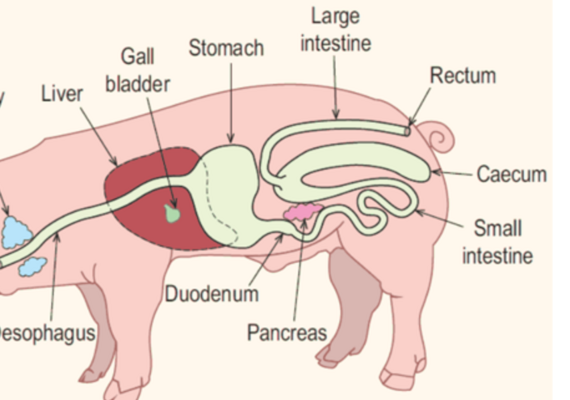
Porcine Digestion
Unlike cows and alpacas, pigs are omnivores. They eat almost anything, including plants and animal products. Due to the fact that pigs are omnivores, they have a digestive system more similar to cats and dogs!
Like humans, pigs are monogastrics which means they only have one stomach compartment to break down food. Generallly, monogastrics are unable to digest the cellulose present in plant products.
Here is an overview of the pig digestive system!
Image Credit: https://o.quizlet.com/e0f8wVIJ3C8iyoD1tODjeQ.png
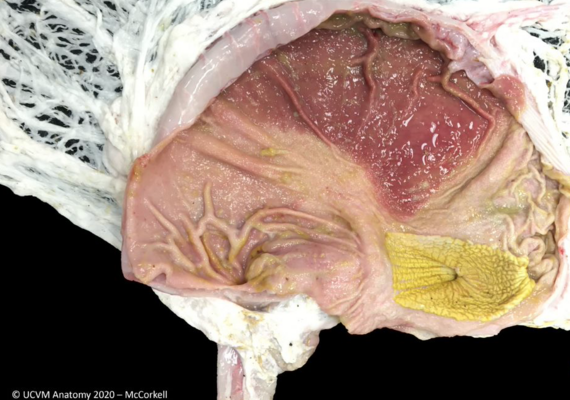
Porcine Stomach
Like dogs, cats, and us humans, pig stomachs are completely glandular. The inside is covered in glands that secrete acid and other substances that help digest food!
Here's an image of a pigs stomach. Does it look similar to the dog stomach you saw on day one? What differences can you see when you compare it to the cow and alpaca stomach?
THINKING QUESTION: How many stomachs do you think sheep and goats have?
Hint: Which animal above do you think they have the most similar diet?
The Renal System
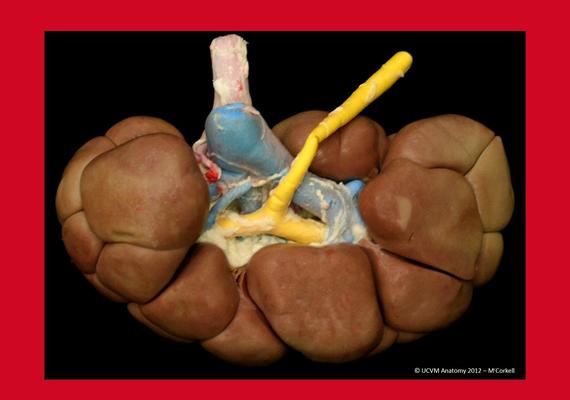
Kidneys
The funtion of the kidneys is to remove wastes and extra fluids from the body. They help maintain a healthy balance of water, salts, and minerals in your blood. The kidneys also synthesize hormones that help control blood pressure, make red blood cells, and keep bones strong and healthy. The bovine kidney has a very different appearance from the human kidney. It is lobated, meaning it has many different lobes which are the bumps that you can see in the image to the right. Each bovine kidney is divided into approximately 12 lobes.
The Reproductive System
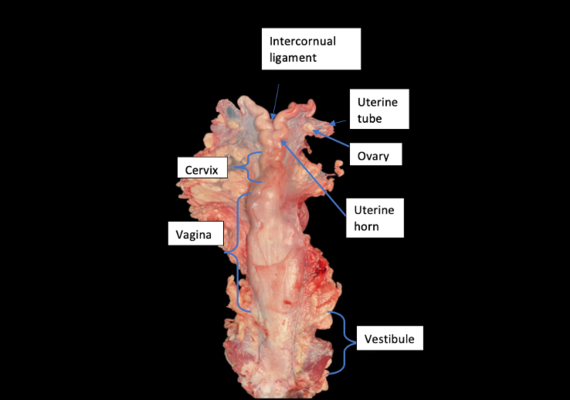
Bovine Reproductive System
Managing bovine reproduction is a major part of being bovine veterinarian so it is very important for veterinarians to know their reproductive anatomy! Cattle have a bicornuate uterus, meaning they have two uterine horns that open into a uterine body and cervix, all of which can be palpated.
Have you ever seen a video/picture of a veterinarian with their arm deep in a cows butt? Veterinarians are able to palpate the female bovine reproductive system rectally in order to feel the reproductive structures and accurately tell the reproductive status of a cow! By doing this we can tell whether or not a cow is pregnant or ready to get pregnant!
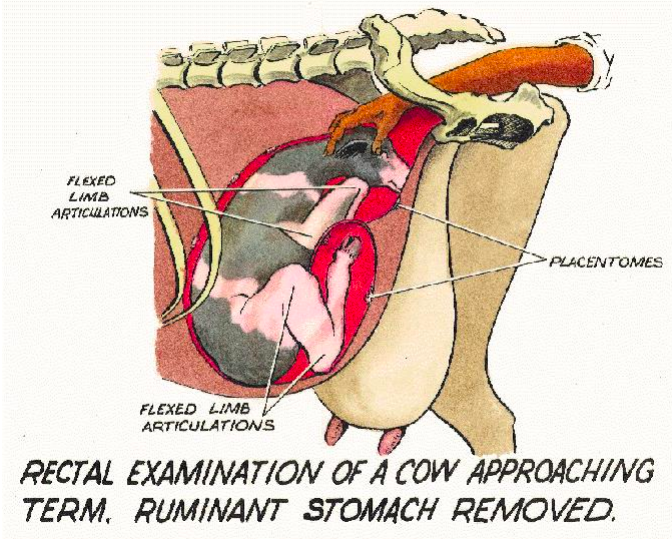
image credit: https://basu.org.in/wp-content/uploads/2020/11/Pregnancy_diagnosis_in_cattle-1.pdf
Udder Anatomy
Another important part of the bovine anatomy for production is the udder. Cows have one udder that is separated into 4 compartments each with their own teat to be milked. Humans have selected for dairy cows with big udders that produce A LOT OF MILK!
However these udders also present an opening for bacteria and other kinds of infection, so veterinarians and producers have to work hard to keep a dairy cow healthy to get the best quality milk!

Image Credit: https://www.imaios.com/en/vet-anatomy/bovines/bull-and-cow-general-anatomy?mic=bull-general-anatomy-illustrations&afi=6&is=3144&il=en&l=en&ul=true

